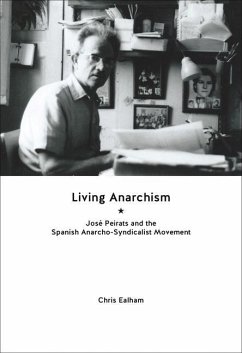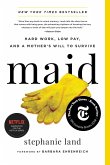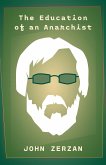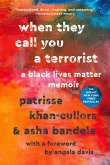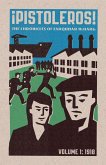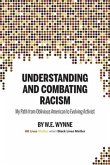16,99 €
inkl. MwSt.
Versandfertig in über 4 Wochen

8 °P sammeln
- Broschiertes Buch
- Merkliste
- Auf die Merkliste
- Bewerten Bewerten
- Teilen
- Produkt teilen
- Produkterinnerung
- Produkterinnerung
The history of a man and his generation. New insights into the Spanish Revolution.
Andere Kunden interessierten sich auch für
![Maid Maid]() Stephanie LandMaid16,99 €
Stephanie LandMaid16,99 €![The Education of an Anarchist The Education of an Anarchist]() John ZerzanThe Education of an Anarchist17,99 €
John ZerzanThe Education of an Anarchist17,99 €![When They Call You a Terrorist When They Call You a Terrorist]() Patrisse CullorsWhen They Call You a Terrorist15,99 €
Patrisse CullorsWhen They Call You a Terrorist15,99 €![Pistoleros!: The Chronicles of Farquhar McHarg Pistoleros!: The Chronicles of Farquhar McHarg]() Farquhar McHargPistoleros!: The Chronicles of Farquhar McHarg16,99 €
Farquhar McHargPistoleros!: The Chronicles of Farquhar McHarg16,99 €![The Maid's Tale The Maid's Tale]() The Maid's Tale12,99 €
The Maid's Tale12,99 €![Troubled Troubled]() Rob HendersonTroubled17,99 €
Rob HendersonTroubled17,99 €![Understanding and Combating Racism Understanding and Combating Racism]() W E Wynne (Bill)Understanding and Combating Racism12,99 €
W E Wynne (Bill)Understanding and Combating Racism12,99 €-
-
-
The history of a man and his generation. New insights into the Spanish Revolution.
Hinweis: Dieser Artikel kann nur an eine deutsche Lieferadresse ausgeliefert werden.
Hinweis: Dieser Artikel kann nur an eine deutsche Lieferadresse ausgeliefert werden.
Produktdetails
- Produktdetails
- Verlag: AK Press
- Seitenzahl: 270
- Erscheinungstermin: 5. Januar 2016
- Englisch
- Abmessung: 200mm x 142mm x 30mm
- Gewicht: 415g
- ISBN-13: 9781849352383
- ISBN-10: 1849352380
- Artikelnr.: 42605994
- Herstellerkennzeichnung
- Libri GmbH
- Europaallee 1
- 36244 Bad Hersfeld
- gpsr@libri.de
- Verlag: AK Press
- Seitenzahl: 270
- Erscheinungstermin: 5. Januar 2016
- Englisch
- Abmessung: 200mm x 142mm x 30mm
- Gewicht: 415g
- ISBN-13: 9781849352383
- ISBN-10: 1849352380
- Artikelnr.: 42605994
- Herstellerkennzeichnung
- Libri GmbH
- Europaallee 1
- 36244 Bad Hersfeld
- gpsr@libri.de
Chris Ealham: Chris Ealham currently lives and works in Madrid, where he teaches History at Saint Louis University. He is a specialist in Spanish labor history and movements, especially those of anarchist and anarcho-syndicalist inspiration. His work has been translated into Castilian, Catalan, and Italian. He also writes for the Spanish daily and anarchist press on topics ranging from soccer to urban planning. He is the author of Anarchism and the City: Revolution and Counter-revolution in Barcelona, 1898-1937 (AK Press 2010)
Introduction
Chapter 1: A rebel youth (1908-23)
1.1. Vall d'Uixó
1.2. Barcelona
1.3. Collblanc
Chapter 2: From the street gangs of Barcelona to the anarchist groups
(1923-30)
2.1. The forging of a revolutionary
2.2. The affinity group
Chapter 3: The 2nd Republic: the split in the anarchist movement and
'revolutionary gymnastics' (1931-33)
3.1. The short republican honeymoon
3.2. 'The University of La Torrassa'
3.3. Radicalisation: the 'man of action' in the streets
3.4. The 'cycle of insurrections': internal schism and demoralisation
Chapter 4: The revolutionary writer (1934-36)
4.1. 'Public Enemy Number One'
4.2. His 'Golden Age' at Solidaridad Obrera
4.3. Anti-fascism, the Popular Front and dissidence
4.4. The May 1936 Zaragoza Congress
4.5. The revolutionary: the military coup and revolution from below
Chapter 5: A revolution consumed by war (1936-39)
5.1. The dissident anarchist
5.2. Censure: the triumph of the CNT-FAI leadership
5.3. The war and defeat
Chapter 6: Stateless: the anarchist nomad in French concentration camps and
the Americas (1939-47)
6.1. The Vernet d'Ariège Concentration Camp
6.2. Penury and exile in the Americas
Chapter 7: Exile in France and the struggle against anarchist bureaucracy
(1947-65)
7.1. Chief of 'the Toulouse school of terrorism'
7.2. The brick maker becomes a historian
7.3. 'The head of the CNT' jailed and tortured
7.4. Love and family in exile
7.5. The fight for culture and the unity of the CNT
7.6. Reunification and division
Chapter 8: The limits of the 'new' anarchism (1965-75)
8.1. The Grupos de Presencia Confederal y Libertaria and the 'New Left'
8.2. The inexorable decline of the CNT in exile
8.3. A restless pen confronts the deep condescension of the past
Chapter 9: The return of the 'democratic danger' (1975-89): the rise,
splintering and decline of the CNT after Franco
9.1. Hope
9.2. Disillusionment
9.3. The return to his roots: Vall d'Uixó (II)
Chapter 10: Conclusion: An indispensable life
Bibliography
Index
Chapter 1: A rebel youth (1908-23)
1.1. Vall d'Uixó
1.2. Barcelona
1.3. Collblanc
Chapter 2: From the street gangs of Barcelona to the anarchist groups
(1923-30)
2.1. The forging of a revolutionary
2.2. The affinity group
Chapter 3: The 2nd Republic: the split in the anarchist movement and
'revolutionary gymnastics' (1931-33)
3.1. The short republican honeymoon
3.2. 'The University of La Torrassa'
3.3. Radicalisation: the 'man of action' in the streets
3.4. The 'cycle of insurrections': internal schism and demoralisation
Chapter 4: The revolutionary writer (1934-36)
4.1. 'Public Enemy Number One'
4.2. His 'Golden Age' at Solidaridad Obrera
4.3. Anti-fascism, the Popular Front and dissidence
4.4. The May 1936 Zaragoza Congress
4.5. The revolutionary: the military coup and revolution from below
Chapter 5: A revolution consumed by war (1936-39)
5.1. The dissident anarchist
5.2. Censure: the triumph of the CNT-FAI leadership
5.3. The war and defeat
Chapter 6: Stateless: the anarchist nomad in French concentration camps and
the Americas (1939-47)
6.1. The Vernet d'Ariège Concentration Camp
6.2. Penury and exile in the Americas
Chapter 7: Exile in France and the struggle against anarchist bureaucracy
(1947-65)
7.1. Chief of 'the Toulouse school of terrorism'
7.2. The brick maker becomes a historian
7.3. 'The head of the CNT' jailed and tortured
7.4. Love and family in exile
7.5. The fight for culture and the unity of the CNT
7.6. Reunification and division
Chapter 8: The limits of the 'new' anarchism (1965-75)
8.1. The Grupos de Presencia Confederal y Libertaria and the 'New Left'
8.2. The inexorable decline of the CNT in exile
8.3. A restless pen confronts the deep condescension of the past
Chapter 9: The return of the 'democratic danger' (1975-89): the rise,
splintering and decline of the CNT after Franco
9.1. Hope
9.2. Disillusionment
9.3. The return to his roots: Vall d'Uixó (II)
Chapter 10: Conclusion: An indispensable life
Bibliography
Index
Introduction
Chapter 1: A rebel youth (1908-23)
1.1. Vall d'Uixó
1.2. Barcelona
1.3. Collblanc
Chapter 2: From the street gangs of Barcelona to the anarchist groups
(1923-30)
2.1. The forging of a revolutionary
2.2. The affinity group
Chapter 3: The 2nd Republic: the split in the anarchist movement and
'revolutionary gymnastics' (1931-33)
3.1. The short republican honeymoon
3.2. 'The University of La Torrassa'
3.3. Radicalisation: the 'man of action' in the streets
3.4. The 'cycle of insurrections': internal schism and demoralisation
Chapter 4: The revolutionary writer (1934-36)
4.1. 'Public Enemy Number One'
4.2. His 'Golden Age' at Solidaridad Obrera
4.3. Anti-fascism, the Popular Front and dissidence
4.4. The May 1936 Zaragoza Congress
4.5. The revolutionary: the military coup and revolution from below
Chapter 5: A revolution consumed by war (1936-39)
5.1. The dissident anarchist
5.2. Censure: the triumph of the CNT-FAI leadership
5.3. The war and defeat
Chapter 6: Stateless: the anarchist nomad in French concentration camps and
the Americas (1939-47)
6.1. The Vernet d'Ariège Concentration Camp
6.2. Penury and exile in the Americas
Chapter 7: Exile in France and the struggle against anarchist bureaucracy
(1947-65)
7.1. Chief of 'the Toulouse school of terrorism'
7.2. The brick maker becomes a historian
7.3. 'The head of the CNT' jailed and tortured
7.4. Love and family in exile
7.5. The fight for culture and the unity of the CNT
7.6. Reunification and division
Chapter 8: The limits of the 'new' anarchism (1965-75)
8.1. The Grupos de Presencia Confederal y Libertaria and the 'New Left'
8.2. The inexorable decline of the CNT in exile
8.3. A restless pen confronts the deep condescension of the past
Chapter 9: The return of the 'democratic danger' (1975-89): the rise,
splintering and decline of the CNT after Franco
9.1. Hope
9.2. Disillusionment
9.3. The return to his roots: Vall d'Uixó (II)
Chapter 10: Conclusion: An indispensable life
Bibliography
Index
Chapter 1: A rebel youth (1908-23)
1.1. Vall d'Uixó
1.2. Barcelona
1.3. Collblanc
Chapter 2: From the street gangs of Barcelona to the anarchist groups
(1923-30)
2.1. The forging of a revolutionary
2.2. The affinity group
Chapter 3: The 2nd Republic: the split in the anarchist movement and
'revolutionary gymnastics' (1931-33)
3.1. The short republican honeymoon
3.2. 'The University of La Torrassa'
3.3. Radicalisation: the 'man of action' in the streets
3.4. The 'cycle of insurrections': internal schism and demoralisation
Chapter 4: The revolutionary writer (1934-36)
4.1. 'Public Enemy Number One'
4.2. His 'Golden Age' at Solidaridad Obrera
4.3. Anti-fascism, the Popular Front and dissidence
4.4. The May 1936 Zaragoza Congress
4.5. The revolutionary: the military coup and revolution from below
Chapter 5: A revolution consumed by war (1936-39)
5.1. The dissident anarchist
5.2. Censure: the triumph of the CNT-FAI leadership
5.3. The war and defeat
Chapter 6: Stateless: the anarchist nomad in French concentration camps and
the Americas (1939-47)
6.1. The Vernet d'Ariège Concentration Camp
6.2. Penury and exile in the Americas
Chapter 7: Exile in France and the struggle against anarchist bureaucracy
(1947-65)
7.1. Chief of 'the Toulouse school of terrorism'
7.2. The brick maker becomes a historian
7.3. 'The head of the CNT' jailed and tortured
7.4. Love and family in exile
7.5. The fight for culture and the unity of the CNT
7.6. Reunification and division
Chapter 8: The limits of the 'new' anarchism (1965-75)
8.1. The Grupos de Presencia Confederal y Libertaria and the 'New Left'
8.2. The inexorable decline of the CNT in exile
8.3. A restless pen confronts the deep condescension of the past
Chapter 9: The return of the 'democratic danger' (1975-89): the rise,
splintering and decline of the CNT after Franco
9.1. Hope
9.2. Disillusionment
9.3. The return to his roots: Vall d'Uixó (II)
Chapter 10: Conclusion: An indispensable life
Bibliography
Index
